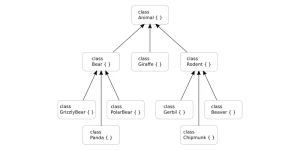How to Organize Your Object-Oriented Code With Inheritance
In the world of object-oriented programming (OOP), mastering the concept of inheritance is akin to unlocking a superpower. It’s the secret sauce that simplifies your code, reduces errors, and makes your programming life significantly easier. Imagine being able to create complex software systems with the elegance of simplicity. That’s what inheritance offers.
In this article, we’ll delve into the fascinating realm of inheritance and how it can be your most potent ally in organizing your object-oriented code. Whether you’re a seasoned developer or just starting your coding journey, understanding inheritance is a crucial step towards becoming an OOP maestro.
The Essence of Reusability: Why Is Inheritance Important?
In OOP, the principle of “keep it DRY” (Don’t Repeat Yourself) is gospel. It’s a mantra that reminds us to avoid redundant code. When you find yourself copying and pasting chunks of code, you’re not only inviting monotony but also introducing a breeding ground for bugs.
Consider this scenario: You’re developing a Tamagotchi game, and the first virtual pet is a polar bear. You diligently create a PolarBear class in JavaScript/TypeScript, complete with attributes like weight and functions like makeNoise, eat, sleep, and roam.
class PolarBear {
private _weight: number = 990;
constructor(weight: number = 0) {
this._weight = weight;
}
makeNoise() {
console.log("made a roar");
}
// Other methods...
}
Now, your boss drops a bombshell—they want all kinds of bears in the game, not just polar bears. You start cloning the PolarBear class for each bear species—black bears, grizzlies, sloth bears, and more. But there’s a twist; they want to make the game educational by adding origin information to each pet.
Suddenly, you’re not just duplicating code; you’re modifying hundreds of lines for all eight species of bears. The likelihood of introducing mistakes skyrockets. It’s a recipe for coding chaos.
Inheritance: The Savior of Sanity
Inheritance rides in like a knight in shining armor to rescue you from this coding nightmare. It’s the organizational wizardry that allows you to create structured class hierarchies with parent and child relationships.
Think of it as creating a family tree for your classes. Just as black bears, grizzlies, and sloth bears are all bears, bears, rodents, and monkeys are all animals. This hierarchical structuring makes your code more intuitive and manageable.

Here’s a snippet of how your code might look with inheritance:
class Animal {
private _weight: number;
private _origin: string; constructor(weight: number = 0, origin: string = "") {
this._weight = weight;
this._origin = origin;
}
makeNoise(noise: string = "")
{
console.log("made a noise that sounded like: " + noise);
}
eat(food: string = "") {
console.log("eats " + food);
}
// Other common methods...
}
class Bear extends Animal {
constructor(weight: number, origin: string) {
super(weight, origin);
}
// Bear-specific methods or overrides...
}
class GrizzlyBear extends Bear {
constructor(weight: number = 600, origin: string = "North America") {
super(weight, origin);
}
// GrizzlyBear-specific methods or overrides...
}
class Panda extends Bear {
constructor(weight: number = 230, origin: string = "China") {
super(weight, origin);
}
makeNoise() {
super.makeNoise("squeak");
}
eat() {
super.eat("shoots and leaves");
}
// Panda-specific methods or overrides...
}
In this hierarchy, the Bear class extends Animal, inheriting common behaviors. Meanwhile, GrizzlyBear and Panda further extend Bear to add their unique characteristics. By utilizing inheritance, you keep your code DRY and easily maintainable.

Finding the Right Relationships: “is-a” and “has-a”
To determine if a class should inherit from another, think about the “is-a” and “has-a” relationships:
- A lemur “is-a” monkey.
- A kangaroo “is-a” marsupial.
- However, a rabbit’s foot is not a rabbit; it’s something a rabbit “has.”
These simple rules can guide you when designing class hierarchies, making your code more intuitive and logical.
Hands-On Practice: Expand Your Inheritance Horizons
Ready to put your newfound knowledge into practice? Visit the TypeScript sandbox and complete the following tasks:

- Implement the remaining animal classes based on the provided example.
- Create a
Monkeyclass. - Extend your
Monkeyclass to create aProboscisMonkeyclass.
Inheritance is not just about clean code; it’s a cornerstone of object-oriented programming. It streamlines communication between objects, enables advanced concepts like polymorphism, and ultimately elevates your programming prowess. For more in-depth information on inheritance, consult the TypeScript documentation.
| Class | Parent Class | Description |
|---|---|---|
| Animal | – | Base class for all animals. |
| Bear | Animal | Represents various types of bears. |
| GrizzlyBear | Bear | Specifically, a grizzly bear. |
| Panda | Bear | Specifically, a panda bear. |
| Monkey | Animal | Represents various types of monkeys. |
| ProboscisMonkey | Monkey | Specifically, a proboscis monkey. |
Unlock the potential of inheritance, and watch your codebase transform into a masterpiece of organization and efficiency. Happy coding!









